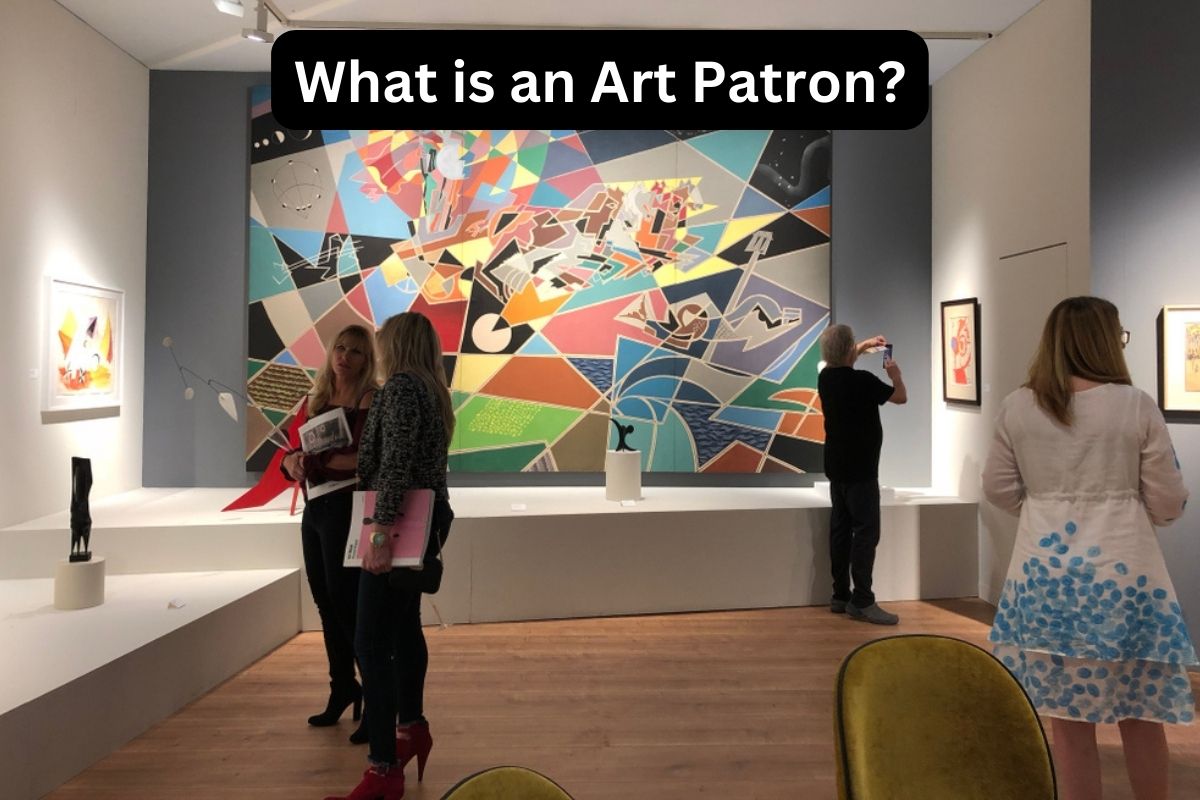Art patronage has been a significant aspect of the art world for centuries. Art patrons are individuals or organizations who support artists by providing financial assistance, commissioning works of art, or promoting the artist’s career.
Art patrons have played a crucial role in shaping the art world by providing artists with the resources they need to create and showcase their work.
Art patrons can be found throughout history, from the wealthy individuals who commissioned famous works of art during the Renaissance to modern-day collectors who support emerging artists.
These patrons often have a deep appreciation for art and recognize the importance of supporting artists in their creative endeavors. By providing financial support, they enable artists to focus on their work and produce art that might not otherwise exist.
In return, art patrons often receive recognition for their support and may even be able to acquire works of art for their collections.
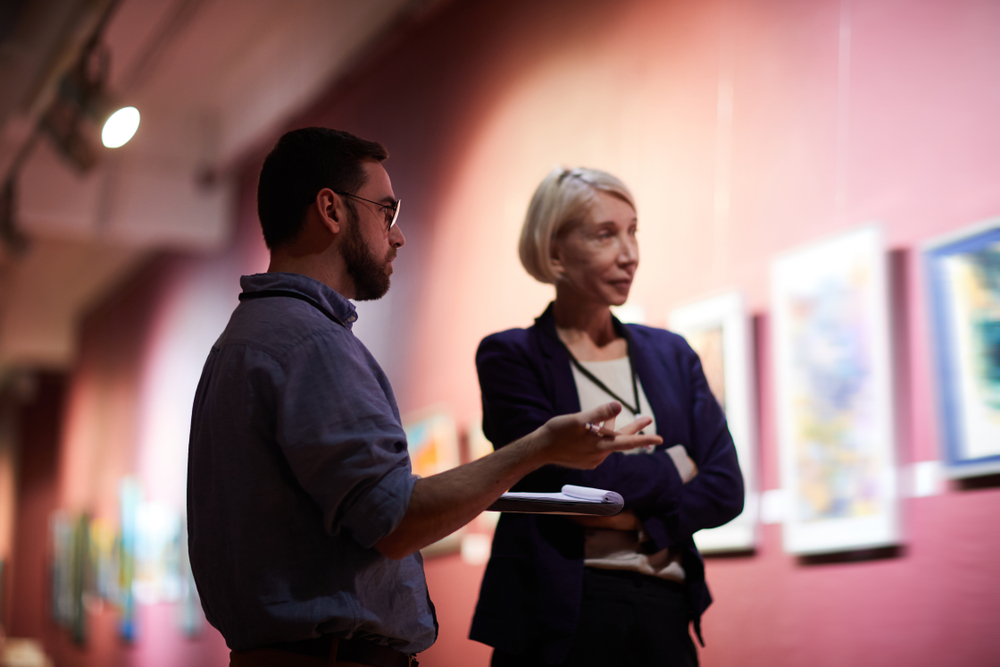
What is an Art Patron?
An art patron is an individual or organization that provides financial or other support to artists, art institutions, or art-related events. Art patronage has been an essential part of the art world for centuries, and it has played a crucial role in the development of art and culture throughout history.
Historical Role of Art Patronage
Art patronage has a long history dating back to ancient civilizations such as Greece and Rome, where wealthy individuals supported artists and commissioned works of art.
During the Renaissance period, art patronage reached its peak, with wealthy families such as the Medici family of Florence, Italy, commissioning works of art from famous artists such as Michelangelo and Leonardo da Vinci.
In the modern era, art patronage has continued to play an essential role in the art world. Museums, galleries, and other art institutions rely on the support of art patrons to fund exhibitions, acquire new works of art, and provide educational programs.
Also Read: Networking for Artists
Private collectors also play a significant role in art patronage, often acquiring works of art and donating them to museums or other art institutions.
Art patronage can take many forms, including financial support, donations of artworks, and sponsorships of art-related events. Art patrons may also provide artists with studio space, materials, and other resources necessary to create their works of art.
Overall, art patronage has been a critical factor in the development of art and culture throughout history, and it continues to play an essential role in the art world today.
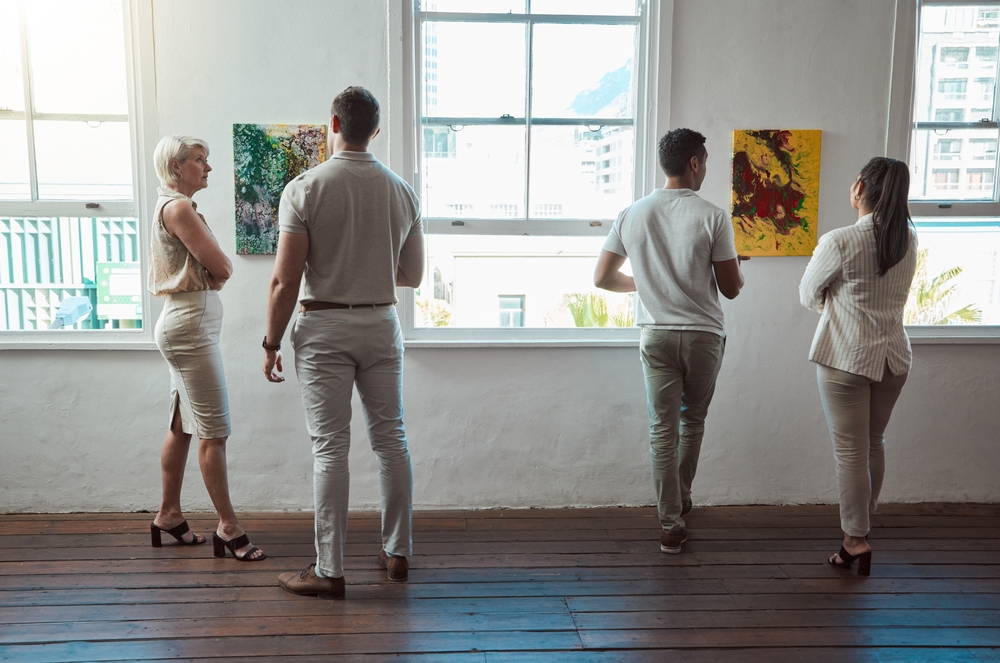
Types of Art Patrons
1. Philanthropists
Philanthropists are individuals or organizations who donate money or resources to support the arts. They may fund art exhibitions, performances, or other art-related events. Philanthropists may also provide grants to artists or art organizations. They are motivated by a desire to support the arts and promote cultural enrichment.
2. Sponsors
Sponsors are companies or organizations that provide financial support for art-related events or projects. They may fund exhibitions, performances, or other art-related events.
Sponsors are motivated by a desire to promote their brand and reach a wider audience. In return for their financial support, sponsors may receive recognition in the form of branding or advertising.
3. Collectors
Collectors are individuals who acquire and display works of art. They may collect art for personal enjoyment or as an investment.
Collectors may also loan their art collections to museums or galleries for public display. They are motivated by a passion for art and a desire to support artists.
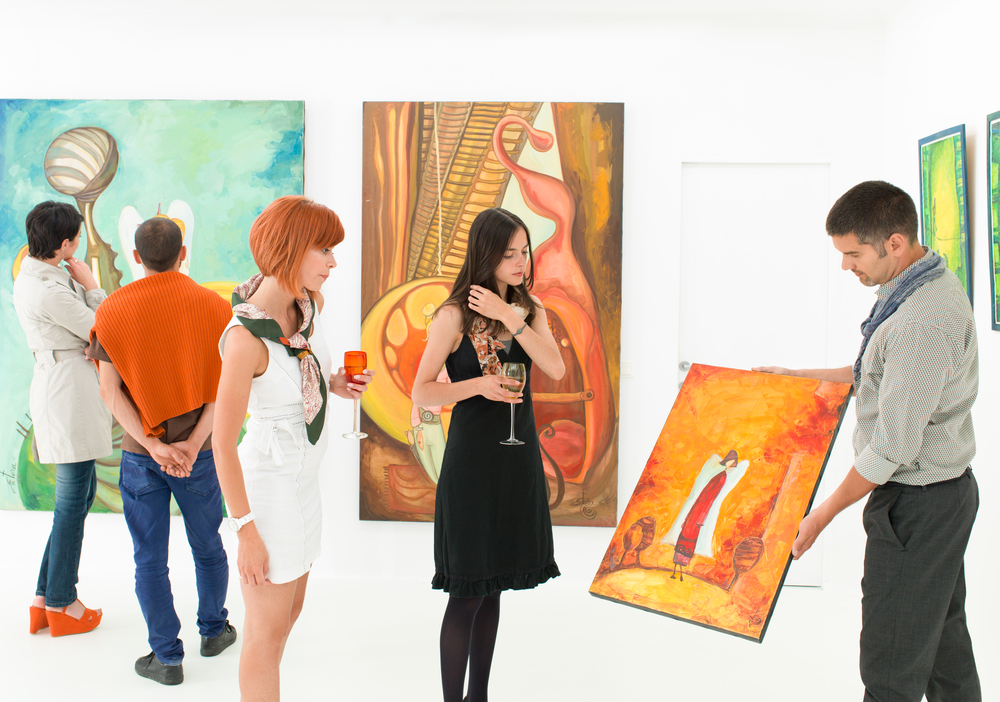
4. Commissioners
Commissioners are individuals or organizations who commission artists to create works of art. They may commission artwork for public spaces, private collections, or as part of an art exhibition.
Commissioners work closely with artists to ensure that the artwork meets their specifications. They are motivated by a desire to acquire unique works of art and support artists.
In conclusion, there are various types of art patrons, including philanthropists, sponsors, collectors, and commissioners. Each type of patron plays a unique role in supporting the arts and promoting cultural enrichment.
Art Patronage in History
1. Middle Ages
During the Middle Ages, the Catholic Church was the primary patron of the arts.
It commissioned artists to create religious artworks, such as frescoes, sculptures, and paintings, for use in churches and other religious buildings.
The artworks were intended to inspire worship and devotion among the faithful.
2. Renaissance Period
The Renaissance period saw a shift in art patronage from the Church to wealthy individuals and families.
This led to a flourishing of the arts, as artists were able to pursue their craft without the constraints of religious themes.
3. Italian Renaissance
The Italian Renaissance was a particularly fruitful period for art patronage. Wealthy families, such as the Medici family of Florence, commissioned artists to create works of art for their private collections.
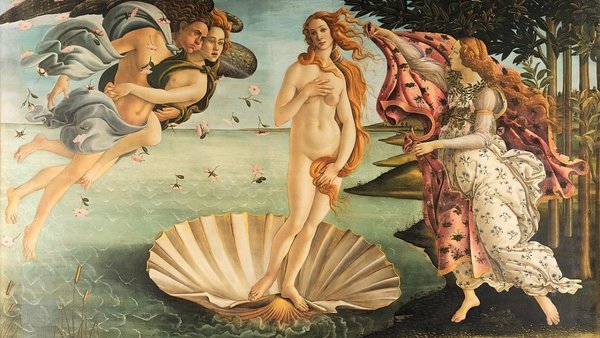
This led to the creation of some of the most famous works of art in history, including Michelangelo’s David and Botticelli’s The Birth of Venus.
4. Florence
Florence was an important center of art patronage during the Renaissance. The city was home to many wealthy families who were eager to commission works of art.
This led to a concentration of artistic talent in the city, with artists competing for commissions and striving to produce the best work possible.
5. Lorenzo de’ Medici
Lorenzo de’ Medici, also known as Lorenzo the Magnificent, was an important art patron during the Italian Renaissance.
He commissioned works of art from some of the most famous artists of the time, including Michelangelo and Botticelli. Lorenzo’s patronage helped to establish Florence as a center of artistic excellence.
6. Churches
Although art patronage shifted away from the Church during the Renaissance, churches continued to commission works of art.
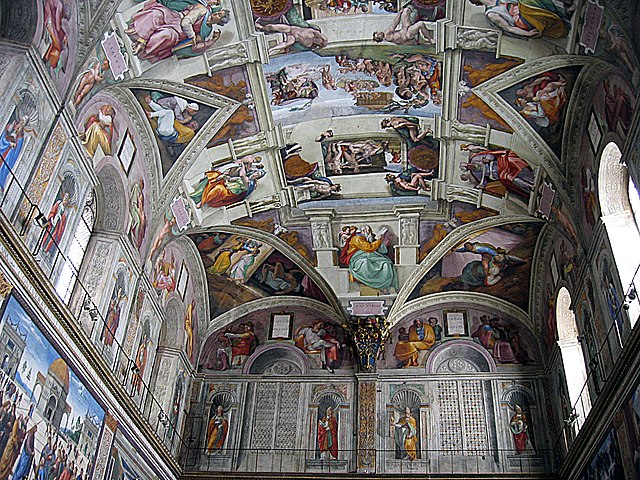
Many of the most famous works of art from the Renaissance period were created for churches, including Michelangelo’s Sistine Chapel ceiling and Leonardo da Vinci’s Last Supper. Churches remain important patrons of the arts to this day.
Art Patronage Today
Art patronage has evolved over time, and in today’s world, there are several entities that play a crucial role in supporting and promoting art.
This section will explore the current state of art patronage and highlight the role of corporations, social media, and supporting artists.
Role of Corporations
Corporations have become significant players in the art world, providing funding and support to artists and art organizations. Many corporations have established their own art collections, which they use to promote their brand and image.
They also sponsor exhibitions and events, providing a platform for artists to showcase their work.
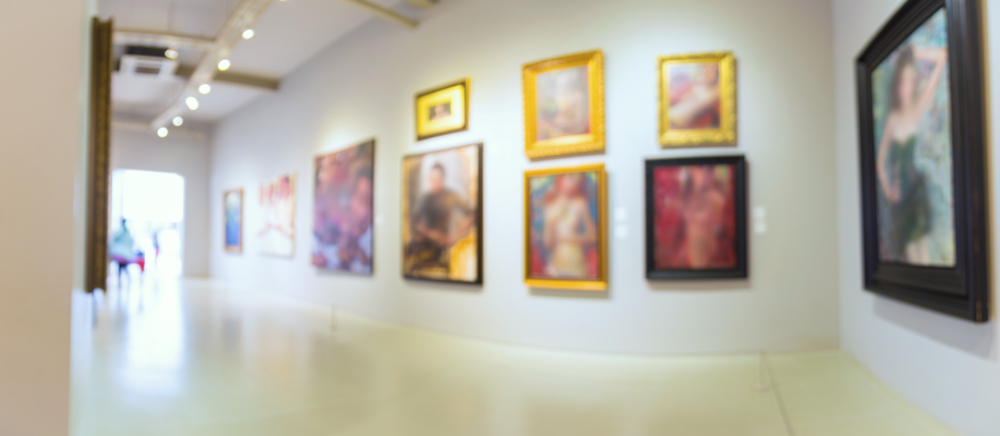
Some corporations have even gone beyond mere sponsorship and have started commissioning artwork for their offices and facilities. This not only supports artists but also creates a more inspiring and engaging work environment for their employees.
Social Media and Art Patronage
Social media has revolutionized the way art is promoted and shared. Artists and art organizations can now reach a much wider audience through platforms like Instagram, Twitter, and Facebook. This has made it easier for artists to gain recognition and build a following.
Social media has also made it easier for art patrons to discover new artists and artwork. Many artists use social media to showcase their work and connect with potential patrons. Art organizations also use social media to promote exhibitions and events, increasing visibility and attendance.
Supporting Artists
Art patrons play a crucial role in supporting artists and ensuring that they can continue to create and share their work. This support can come in many forms, including purchasing artwork, commissioning new work, and providing funding and resources.
Art organizations also play a vital role in supporting artists by providing exhibition opportunities, residencies, and grants. These opportunities help artists to develop their skills and reach a wider audience.
In conclusion, art patronage today is a multifaceted and dynamic field, with corporations, social media, and supporting artists all playing important roles. By working together, these entities can continue to support and promote art, ensuring that it remains a vibrant and essential part of our culture.
Famous Art Patrons
1. Peggy Guggenheim
Peggy Guggenheim was an American art collector and patron. She was born in 1898 and died in 1979.
Peggy Guggenheim was an important figure in the art world, and her collection of modern art is now housed in the Peggy Guggenheim Collection in Venice, Italy. She supported many artists, including Jackson Pollock, Mark Rothko, and Salvador Dali.
2. Charles Saatchi
Charles Saatchi is a British art collector and patron. He was born in 1943. Saatchi is best known for his role in promoting the Young British Artists (YBAs), a group of artists who emerged in the 1990s.
Saatchi’s collection includes works by artists such as Damien Hirst, Tracey Emin, and Jeff Koons.
3. Jeff Koons
Jeff Koons is an American artist and art patron. He was born in 1955.
Koons is known for his sculptures, which often feature everyday objects such as balloons and vacuum cleaners. He has been supported by many art patrons, including Charles Saatchi.
4. Damien Hirst
Damien Hirst is a British artist and art patron. He was born in 1965. Hirst is known for his controversial works, which include a shark preserved in formaldehyde and a diamond-encrusted skull. He has been supported by many art patrons, including Charles Saatchi.
5. Young British Artists
The Young British Artists (YBAs) were a group of artists who emerged in the 1990s. They were supported by art patrons such as Charles Saatchi. The YBAs included artists such as Damien Hirst, Tracey Emin, and Sarah Lucas.
6. Jackson Pollock
Jackson Pollock was an American artist who was supported by art patron Peggy Guggenheim.
Pollock was a leading figure in the abstract expressionist movement, and his paintings are known for their unique style and technique.
7. Sandro Botticelli
Sandro Botticelli was an Italian painter who lived in the 15th century. He was supported by the Medici family, who were important art patrons in Florence.
Botticelli’s paintings include “The Birth of Venus” and “Primavera.”
Art Patronage in Different Forms of Art
Literature
Art patronage in literature has a long history, with wealthy individuals and institutions supporting writers and poets throughout the ages. In ancient times, patrons would sponsor the creation of epic poems and other works that celebrated their achievements and elevated their status.
During the Renaissance, wealthy families in Italy and other parts of Europe would commission writers to create works that celebrated their family history and achievements.
In modern times, literary patronage takes many forms. Some wealthy individuals support writers by providing them with financial support or by purchasing their works. Others create foundations or endowments to support the arts more broadly, including literature.
Sculpture
Sculpture has been a popular form of art patronage for centuries. Wealthy individuals and institutions have commissioned artists to create sculptures that commemorate important events, celebrate historical figures, or simply beautify public spaces.
In ancient times, patrons would often commission sculptures of gods and goddesses, while during the Renaissance, wealthy families would commission sculptures of themselves or their ancestors.
Today, sculpture patronage takes many forms. Some wealthy individuals commission sculptures for their private collections, while others donate sculptures to public spaces or museums.
Institutions such as universities and hospitals also commission sculptures to beautify their campuses and provide inspiration to visitors.
Portraits
Portrait patronage has a long history, with wealthy individuals and institutions commissioning artists to create portraits of themselves, their families, and important historical figures.
In ancient times, portraits were often created to honor gods and goddesses, while during the Renaissance, wealthy families would commission portraits of themselves or their ancestors.
Today, portrait patronage takes many forms. Some wealthy individuals commission portraits for their private collections, while others donate portraits to public spaces or museums.
Institutions such as universities and hospitals also commission portraits to honor important figures and provide inspiration to visitors.
Coins
Coin patronage has been a popular form of art patronage for centuries. Wealthy individuals and institutions have commissioned artists to create coins that commemorate important events, celebrate historical figures, or simply beautify currency.
In ancient times, coins often featured the faces of gods and goddesses, while during the Renaissance, wealthy families would commission coins with their own likeness.
Today, coin patronage takes many forms. Some wealthy individuals commission coins for their private collections, while others donate coins to public spaces or museums. Governments also commission coins to commemorate important events and historical figures.
The Relationship Between Art Patron and Artist
Contract
The relationship between an art patron and an artist is often formalized through a contract. The contract outlines the expectations of both parties, including the scope of the project, deadlines, and compensation.
The contract also serves as a legal document that protects both parties in case of any misunderstandings or disputes.
Financial Support
Art patrons provide financial support to artists, which allows them to create their work without worrying about financial constraints. This support can come in various forms, such as grants, sponsorships, or commissions.
In return, the patron gains access to the artist’s work and may be able to display it in their own collection.
Reputation
Art patrons can significantly impact an artist’s reputation. The patron’s endorsement of an artist’s work can lead to increased exposure, critical acclaim, and opportunities for further exhibitions.
Similarly, the patron’s disapproval can harm an artist’s reputation and limit their opportunities.
Persona
The relationship between an art patron and artist can also be influenced by their respective personas. The patron’s reputation, social status, and personal tastes can affect the artist’s creative decisions.
Similarly, the artist’s personality, style, and beliefs can influence the patron’s decision to support them.
In conclusion, the relationship between an art patron and artist is a complex one that involves various factors such as financial support, reputation, and persona.
The contract formalizes the relationship and protects both parties, while financial support allows the artist to create their work without financial constraints.
The patron’s endorsement can significantly impact an artist’s reputation, and their respective personas can influence each other’s decisions.
Conclusion
In conclusion, an art patron is a person or organization that supports artists and their work. They provide financial assistance, space, and other resources to help artists create and showcase their art.
Art patrons have played a significant role in the development of art throughout history, from the Medici family in Renaissance Italy to modern-day philanthropists such as Eli Broad and Agnes Gund.
Art patrons can come from all walks of life and can support a variety of artistic endeavors. Some may specialize in supporting emerging artists, while others may focus on established artists or specific art forms.
Regardless of their focus, art patrons are essential to the art world as they help to foster creativity and innovation.
While art patronage has evolved over time, it remains an essential part of the art world today. Without the support of art patrons, many artists may struggle to create and showcase their work. Therefore, it is crucial to continue to recognize and support the contributions of art patrons in the art world.

